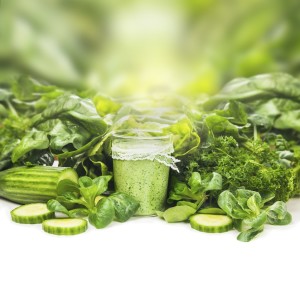
Celery stalks (Apium graveolens) are a member of the esteemed zero calorie vegetable group, so if they did clear acne, it would be truly brilliant.
You’d be able to eat celery all day and pile up the acne nutrition to an unlimited extent. Biting into celery is instantly promising, as the strong taste which repels so many is usually indicative of nutrition.
The undeniable truth is that celery contains a wide variety of nutrients, but high amounts of none of them. 50 grams contains 1% of the RDI for magnesium, 2% for vitamin C, 4% for vitamin A, and a stone cold 0% for zinc. Celery is far feebler for acne nutrition than broccoli, kale or spinach.
Where basic, easily affordable celery really shines is in supercharging blood flow to the skin.
Celery dilates your blood vessels
You might be aware that cured meats like ham and bacon are increasingly linked to cancer, and that organic celery powder is touted as a healthier way to make them. The reason is celery’s extreme density in naturally occurring nitrates, which are similar to the synthetically manufactured nitrates added to ham. Celery powder consists of 2.75% nitrate, and celery itself, including the bitter leaves, is equally rich in it…
…and these nitrates are why celery is so excellent for blood flow. The moment you bite into a celery stalk, benign bacteria on your tongue begin to ferment the nitrates and produce nitrinines as metabolites. As you swallow the celery, benign gut bacteria get in on the act, fermenting the nitrinines and turning them into nitric oxide.
Nitric oxide is a vasodilating gas, which relaxes your blood vessels. It’s vital for heart function and blood pressure, but also encourages blood flow to the extremities, including to your skin.
With higher blood flow comes increased oxygen delivery to the skin, and massive improvements in your skin tone. It’s essentially a subtler version of the alive and vibrant skin you get from hardcore exercise.
Even better, improved blood flow can subtly prevent acne, via an increased flow of nutrients and antioxidants. This study halfway confirmed the power, testing plant nitrates from celery, lettuce and spinach, and discovering improved blood flow during both exercise and rest.
Read Annihilate Your Acne – get the ultimate diet for clear and glowing skin!
Also promising is the less known celery compound 3-n-butyl phthalide (3NBP), which joins forces with sedanolide to provide the unique flavour of celery.
This study and this study concluded that 3-n-butylphalode increased cerebral blood flow significantly, and in this study, by enough to prevent neuron death. 3NBP is actually known to increase capillary formation in the brain, while strengthening the structure of existing capillaries and enhancing microcirculation. In fact, the Chinese government approved 3NBP as an official remedy for obstructed brain blood flow (cerebral ischemia) back in 2002.
Improved brain blood flow isn’t guaranteed to translate to a flood through the skin, but the raw potential is there.
Combining both compounds, we have an excellent study on celery itself, using long term data from the mass population. Only 3 out of 12 vegetables reduced blood pressure significantly when eaten raw, and they were celery, tomatoes, and scallions.
The best part is that you can snap off a celery stalk and enhance your skin’s blood flow at any time.
Inflammation and antioxidants

Celery has some strong bonus powers as well, and the first is calming inflammation. There’s one celery expert called James Duke who claims to have identified over 20 anti-inflammatory compounds in celery. Is he right? One of the confirmed flavonoid antioxidants is luteolin, which lowers numerous pro-inflammatory chemicals behind acne, including interleukin-1b, TNF-a, and COX-2.
The problem then? While luteolin is claimed to be celery’s signature compound by almost everyone, its levels are actually normal. The content of 1.05mg per 100 gram beats broccoli (0.00mg), spinach (0.74mg) and kale (0.00mg), but is actually beaten by red grapes (1.30mg). The confusion might have started because Chinese celery, a thinner Asian subspecies with thicker bushier leaves, contains 34.87mg per 100 grams.
Important article – the top 6 vitamins and minerals for clearing acne
Forget luteolin then – a far superior flavonoid in celery is apigenin, found in concentrations of 2.85mg per 100 grams. In one study, apigenin strongly inhibited the pro-inflammatory chemical COX-2, the same pain-increasing agent which aspirin inhibits. This time, celery’s content of apigenin is outdone by parsley (215.46mg), but very few mainstream foods, although if you’re stuck in China, then you’re in luck because Chinese celery contains 24.02mg.
Regular celery is also decent for antioxidants, containing not just apigenin and luteolin, but also quercetin, kaempferol and ferulic acid.
Most are found in good though not monstrous dosages. For example, quercetin is found in 0.39mg concentrations in celery, compared to 15.16mg in boiled asparagus, 14.84mg in raw cranberries, and 21.4mg in raw brown onions. However, celery does have the power to enhance your body’s own antioxidant production; this study found increases in superoxide dismutase and catalase output, in addition to glutathione-s-transferase, which detoxifies unhealthy heavy metals and pesticides.
Remember – always eat the leaves of celery. They’re the strongest, bitterest part, and that’s because most of the plant’s antioxidants are concentrated there.
The one factor that can ruin celery
Celery stalks have few innate downsides. The sugar is non-existent at 1.8 grams per 100 grams. Celery is a happy low to moderate oxalate food with just 11-20mg, unlike spinach at 750-800mg. Oxalates are the sinister plant toxins behind kidney stones, which may increase inflammation in the unluckily sensitive.
The only obstacle in celery is completely artificial – pesticides.
Year after year, celery features in the Dirty Dozen list for the most heavily agrochemical-contaminated foods. In 2010, it ranked 1st, in 2014, 4th, while in 2017’s edition, celery was ranked 9th behind strawberries in 1st place. There’s evidently been a gradual decontamination, but 9th out of 48 commercial crops is grim news.
One villain is an insecticide called acephate, designed to kill biting and sucking insects such as aphids. Acephate was detected on 34.7% of celery crops back in 2010, and importantly for acne, acephate is strongly linked to increased oxidative stress when swallowed. Acephate is powerful enough that scientists commonly use it to suppress antioxidants before testing a remedy that increases them.
Acephate is also toxic to human sperm and is a strong xenoestrogen. If you know anybody who’s struggling to conceive a baby, then celery could be why. Acephate has a half life of 10 to 16 days, but after waiting that long, your celery will be rotting away.
Important article – the top 7 natural topical treatments for acne
This is just one example. The thing about pesticides in fruit and vegetables is that one individual source will rarely be strong enough to derail your skin. But the more pesticide-drenched foods you eat, whether it’s conventional strawberries, apples or celery, the more the depletion in antioxidants will accumulate.
Some overly relaxed people might recommend simply washing your celery under a tap to remove the pesticides. Well, before their agrochemical examinations, the FDA not only washes celery, they wash it with a high power industrial washing machine, and it still ends up covered with pesticides.
Thankfully, organic celery is one of the cheaper organic vegetables, unlike organic raspberries or blueberries. Celery has also been compared directly to its conventional counterpart. Calcium and magnesium levels were barely any different, but ascorbic acid, AKA vitamin C, was 118.18% higher in the organic celery, while zinc was 47.93% higher. Those nutrients are almost non-existent in celery anyway, but the rewarding implication is that the antioxidants and anti-inflammatory compounds might also become richer.
If you’re on a belt tightening budget, then acne-friendly foods which don’t need to be organic include pineapples, broccoli, pomegranate, garlic, onions, sweet potatoes, cabbage, watermelon, mango, papaya and carrots.
A brain health booster?
Over the last decade, the greatest hype surrounding celery has been over its memory-enhancing powers. Most of these come from the antioxidant luteolin:
STUDY ONE: the study which gave celery its shining reputation tested luteolin on mice, who woke up and found themselves trapped in a maze. 2 adult and 26 young mice were given 20mg of luteolin daily. Their spatial awareness shot up, allowing them to escape the confusing maze. The older, senile mice taking luteolin performed equally to the younger mice taking nothing.
STUDY TWO: luteolin supplementation restored the spatial awareness and memory loss caused by Alzheimer’s disease (study).
STUDY THREE: once again, luteolin reversed learning and and memory deficits in rats, and even improved the transmissions between brain synapses (study). The conclusion: “flavonoid luteolin shows great potential… for protecting synaptic function and enhancing memory”.
STUDY FOUR: one massive brain change associated with Alzheimer’s disease is the accumulation of amyloid plaques, which mostly consist of amyloid-β peptides. In this rat study, luteolin reversed both memory and learning impairments caused by amyloid-β peptide accumulation. Brain antioxidant levels also rose, with glutathione and superoxide dismutase rising.
The luteolin antioxidant looks fantastic for memory, but like with its anti-inflammatory powers, the quantities in celery are too small. Celery contains 1.05mg, and the first great study used 20mg. Humans are much bigger than mice too.
Again, it’s purely a myth that celery is an amazing luteolin source, although we can’t ignore the cerebral blood flow-boosting 3NBP either…
…but the opportunity isn’t gone up in a puff of smoke quite yet. Why? Because you can eat the real luteolin-rich foods instead. Chinese celery contains 34.87mg per 100 grams. The greatest known sources of luteolin are Mexican oregano (1028.75mg), celery seed spice (811.41mg), juniper berries (69.05mg), thyme (45.25mg), and radicchio (37.96mg).
Raw honey – a natural secret for wiping out acne bacteria
Among more popular foods, thyme is easily accessible, and another two contenders are sage (16.70mg) and parsley (19.75mg). You can purchase celery seeds in bulk on amazon and use them as a spice in recipes. Herbs and spices are evidently the way forward.
Fruits and vegetables which rank similar to celery include red grapes (1.30mg), green kiwi fruits (0.74mg), chicory greens (2.08mg), cantaloupe melons (0.64mg), and lemons (1.90mg). If you combine various foods like this which are merely decent, including celery, then the brain benefits might finally appear. Or, you could combine celery with completely unrelated brain-boosting foods, like ginger and its power to boost brain-derived neutrophic factor.
Conclusion
Celery is inferior to broccoli, kale, and spinach for raw acne-clearing nutrition, but organic celery beats them easily for improving blood flow to the skin. Spinach is also packed with natural nitrates, but with spinach, you can’t grab a handful of leaves and swallow them in five seconds flat.
Celery also illustrates how different foods have completely different roles in your acne strategy, and why the smart acne patient eats a wide variety.
Organic celery improves blood flow, while broccoli contains the anti-inflammatory compound sulforaphane. Kale has huge amounts of vitamin A, while onions and garlic provide the raw materials for glutathione production via their sky-high sulphur content.
Almost every plant has one hidden power for acne – even cucumbers (namely accelerating alcohol detoxification).
NEXT: learn the root causes of acne, clear your skin permanently
Thanks for reading!
